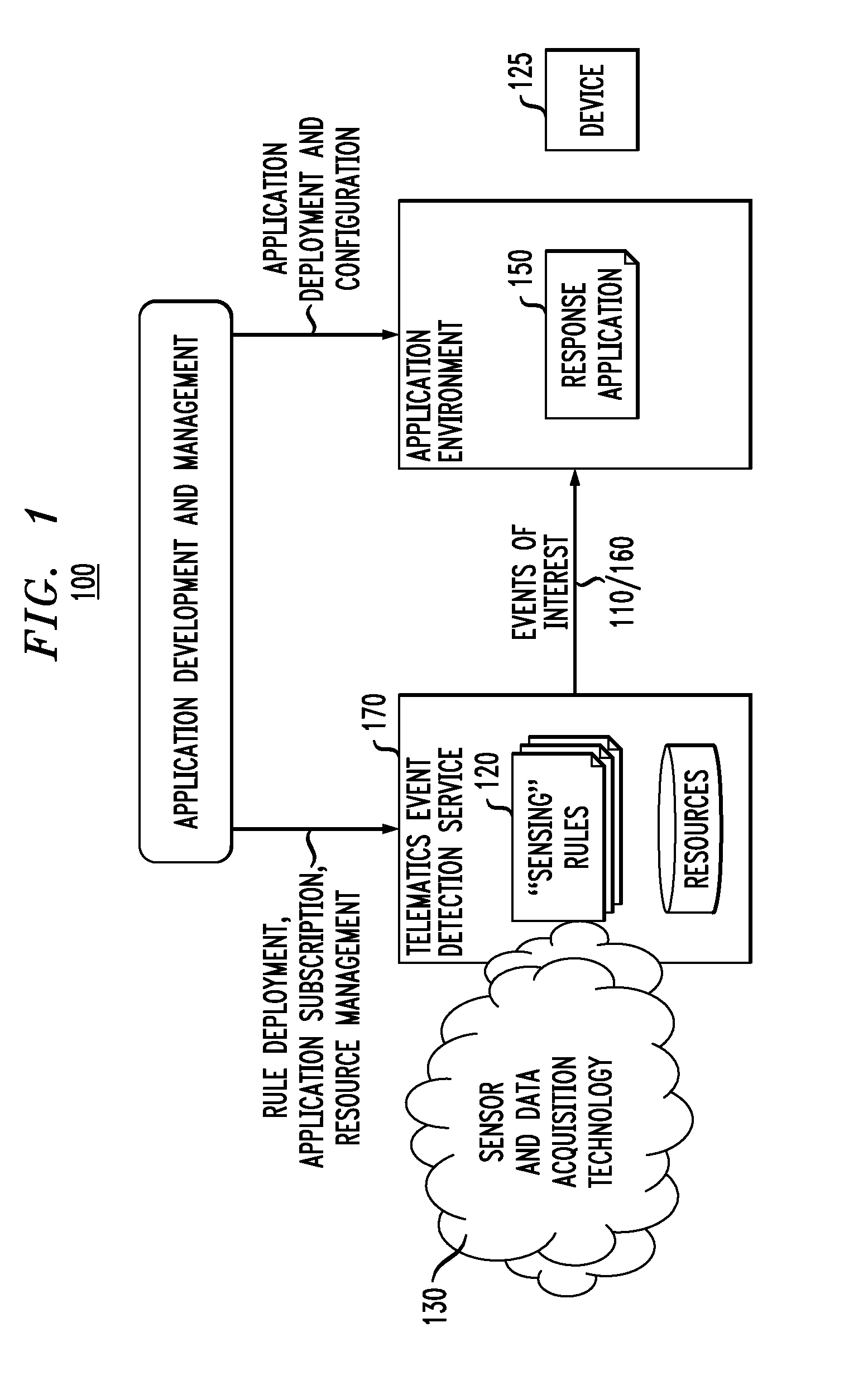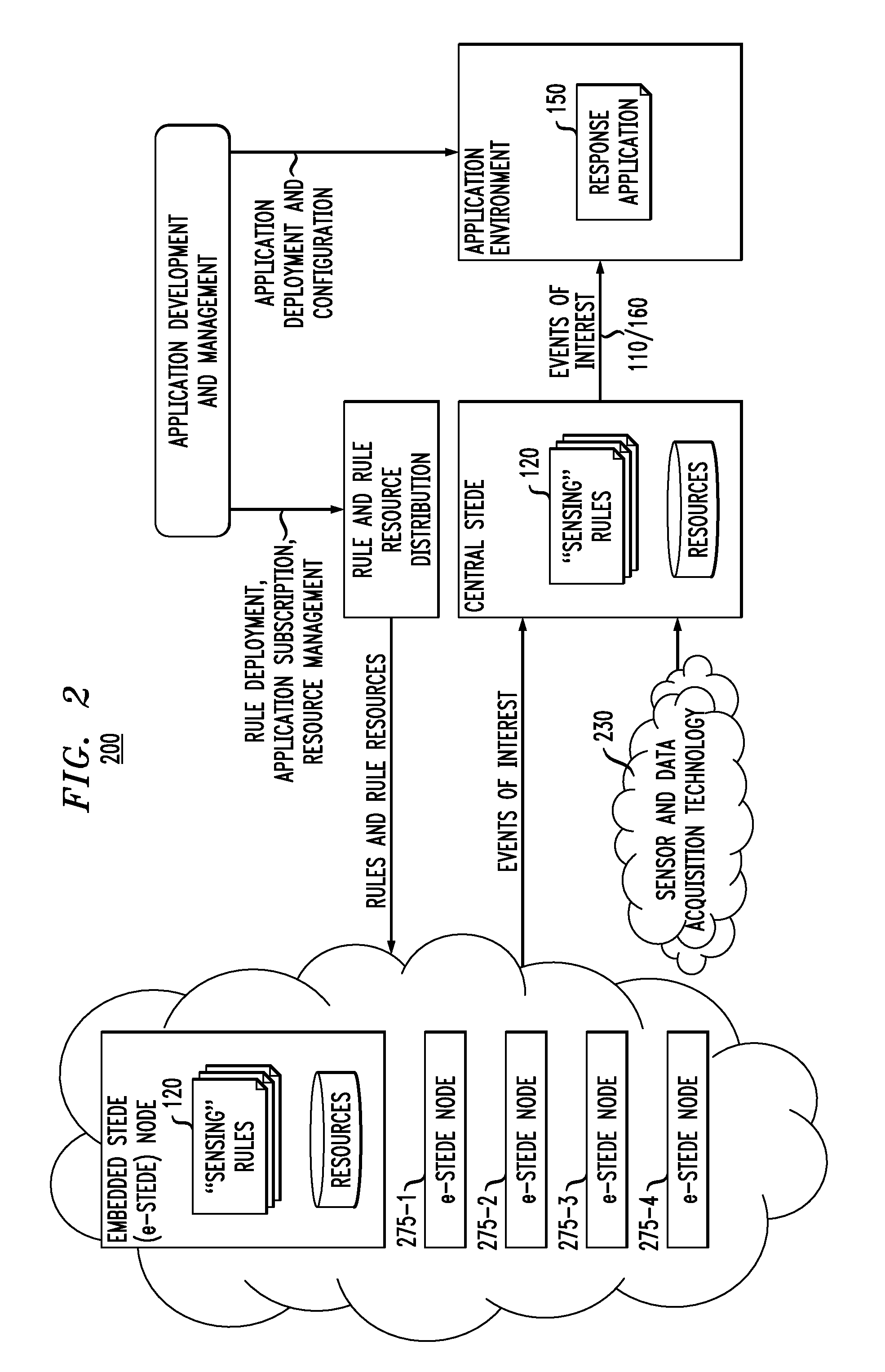Distributed rule processing for ubiquitous computing environments
a computing environment and distributed rule technology, applied in the field of sense response technology, can solve the problems of prohibitively expensive computing power required from servers to handle processing and communication loads, limited ability to respond to requests, and substantial network usage charges
- Summary
- Abstract
- Description
- Claims
- Application Information
AI Technical Summary
Benefits of technology
Problems solved by technology
Method used
Image
Examples
Embodiment Construction
[0017]An important class of mobile-computing applications involves sensing conditions in a mobile user's physical context and responding to those conditions, perhaps in real time. This class of applications is conventionally known as “sense and respond.” Examples of sense and respond systems are found in various domains, including mobile commerce, fleet logistics, and asset and personnel tracking.
[0018]The Spatio-Temporal Event Detection Environment (STEDE) offers a rule-based programming model in which the application is partitioned in two parts: (1) a set of rules that operate on low-level input events and which, when triggered, produce high-level, application-defined events; and (2) logic that acts on the high-level events, which is deployed outside STEDE, and typically within the environment of the enterprise deploying the rule. For a detailed description of a Spatio-Temporal Event Detection Environment, see, for example, Jung, W. C, Lee, D. R., Lee, W. I., Mitchell, S., Munson,...
PUM
 Login to View More
Login to View More Abstract
Description
Claims
Application Information
 Login to View More
Login to View More - R&D
- Intellectual Property
- Life Sciences
- Materials
- Tech Scout
- Unparalleled Data Quality
- Higher Quality Content
- 60% Fewer Hallucinations
Browse by: Latest US Patents, China's latest patents, Technical Efficacy Thesaurus, Application Domain, Technology Topic, Popular Technical Reports.
© 2025 PatSnap. All rights reserved.Legal|Privacy policy|Modern Slavery Act Transparency Statement|Sitemap|About US| Contact US: help@patsnap.com



